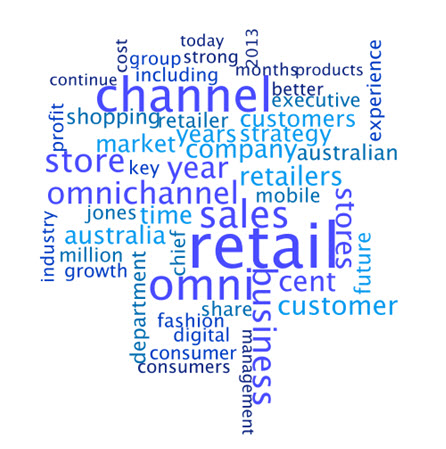Is tech finally poised to deliver—your groceries?
Visions of ecommerce-driven drive-thrus, pickup zones, delivery vans and the like have popped up in the grocery sector for at least the past 15 years. Nonetheless, most grocers in 2015 continue to operate just as they did twenty or forty years ago. The vast majority of their customers still buy food the old-fashioned way—by driving to the store and pushing a cart.
Given that chains themselves have launched—and shelved—all kinds of alternative pilot programs over the years, should they really take seriously the new wave of startups seeking to disrupt the grocery business? Absolutely.
The safest strategic approach is to assume that changes are coming that you need to know about. What could these changes mean to the nuts and bolts of owning and developing grocery-anchored shopping centers? It’s likely that the existing formula—“Let’s build a store every ‘X’ number of miles whenever the demos match our criteria”—will change dramatically, with chains adjusting their store count needs and prototypes to address the shifting retail landscape. If that happens, those who can understand and adapt to these trends the fastest will gain an important competitive edge.
In the grocery sector, in particular, the trend toward “crowdsourcing” is exactly the kind of potential disruptor landlords should be tracking.
Via crowdsourcing, the likes of Uber use the Internet and GPS-enabled smartphones to tap into pools of freelance drivers. Top U.S. mall owners like Simon, GGP and Macerich have been using such drivers to offer delivery at their malls via a startup called Deliv for a couple of years now. However, the real sweet spot for this might just be supplying daily needs on a regular basis, not delivering Christmas presents once a year during the holiday rush.
I recently tried Shipt, an Uber-like startup now operating in Birmingham, Nashville, Dallas, Orlando, Tampa and South Florida, and was impressed. This grocery-delivery app offers simple checkout, fast arrival and access to weekly deals and sales. Subscribers pay either $99 a year or $14 a month. As long as their order is over $35, they can avail themselves of unlimited deliveries (sorry folks, no alcohol as yet). I punched in my Publix order and it was on our doorstep within 45 minutes. As an experiment, I asked for two different avocados—one that was riper than the other. I got exactly what I asked for. And would you believe tipping is discouraged?
Back in the ’90s, top-heavy delivery services like Webvan sank millions of dollars into infrastructure and were just too soaked with debt to survive at a time when tech adoption was still in its infancy. Today, mobile devices are at the heart of how most people live. The dawn of frictionless, Uber-style decentralization clearly makes grocery delivery in 2015 a lot more viable than in the era of Segways and grunge rock. At 4:30 or 5 p.m., tech-savvy parents can look up a recipe, order the ingredients on Shipt and have everything on their doorsteps right as they get home from work. This is appealing to just about everybody, but it will be a particularly easy sell for two-income households as the Millennials move up in the workforce.
How disruptive is a service like Shipt, which, in Florida, works exclusively with market-leader Publix? In a sense, it is almost an anti-disrupter in that it enables Publix to stick to its highly successful core business. Even though Shipt operates completely independently from Publix, it functions almost as an outsourced delivery arm for the chain.
Still, there are some potential issues: When you buy peanut butter in person, you might see the jelly right next to it and remember that you needed jelly, too. With online grocery delivery, chains lose out on in-store impulse purchases—a potentially significant issue over time. This highlights the potential need for grocers to collaborate directly with startups in order to make sure they offer some kind of functional equivalent to impulse buying. For example, some e-tailers are tinkering with the so-called “gamification” of the shopping process. The idea is to create a fun and game-like way of enticing customers to engage in additional purchases.
Another potential drawback relates to the customer experience: For some of the very best grocers, the customer experience is paramount. They have gone to extraordinary lengths to make sure all of their stores offer the same cleanliness, friendly customer service and rich sensory experiences. What happens to the higher-margin, fresh parts of the business—salad and olive bars, the bakery, deli, prepared foods and the like—when more shoppers start trading the in-store experience for shopping via a mobile device?
Widespread use of disruptive grocery-shopping tools could ultimately change the way we design and merchandise grocery stores. There are many unknowns here. According to Morgan Stanley, Food at Home has ceded share to Food Away From Home in dramatic fashion over the years, with the grocery sector’s share of total food expenditures dropping to 51 percent in 2014, down from 62 percent in 1992. Could grocery delivery slow or reverse this trend by, in fact, making it a lot easier for busy—and increasingly health-conscious—shoppers to cook fresh food at home?
Or will users of new tech tools focus mostly on commoditized goods—toilet paper, packaged goods, cleaning supplies and other non-perishable SKUs—and shop for all things “fresh” in person? Today, commoditized goods still make up a large portion of what is on offer in a typical grocery store. But if they can be found at much-cheaper prices from non-grocery sources via shopping services (see Amazon Prime Pantry and Jet.com below), this could squeeze the center of the store. A possible strategic response would be to ramp up the experience and offerings around the perimeter as a bid to drive traffic to these higher-margin areas. Ultimately, grocery store footprints could even shrink as a result of these trends. It will be interesting to see whether tech-driven grocery shopping really does take off. To be sure, chains now have many new variables to enter into their test-and-learn software in the months and years ahead.
Other potential disrupters could disproportionately affect, not only mainline grocery stores, but also that mainstay of frugal grocery shoppers everywhere: the warehouse club. For the past 30 years or so, these cavernous boxes have been extremely successful. But given that Millennials are more likely to live in smaller homes and to rent rather than buy, you have to wonder whether the warehouse club concept will live forever. Two potential disruptors in particular—Amazon Prime Pantry and Jet.com—already espouse the virtues of normal-sized packaging. In fact, you can’t even buy a large box of diapers at Prime Pantry. This trend is in play even as more than 40 percent of the SKUs in Kroger’s new, 120,000-square-foot marketplace stores are non-food items. If the online disruptors can beat Kroger on price, which is no stretch, this could be the perfect opportunity for them to encroach.
Still relatively new, Amazon Prime Pantry has been bolstered by its offer of (almost) free shipping. A Pantry Box ships for $5.99 and holds 45 pounds or four cubic feet of items. Amazon employs the aforementioned gamification trend with its Pantry Box well: As you add items to your box, Amazon tallies what percentage of the box remains, encouraging you to get all the way to 100 percent by adding items. In our experiment, I got pretty close with 99.7 percent—and purchased an extra $100 of items I never intended to buy. In case you need help figuring out what to order, a sidebar shows related items and how much space they take up in your box. You can even click a button to have Amazon auto-fill the remainder of your box with related items. If $5.99 seems like too much to pay to deliver something you can get around the corner at your local grocery store, Amazon has fixes for that in the form of various free or nearly free shipping offers.
For its part, Jet.com is the online equivalent of a warehouse club for people who, for whatever reason, have no need for a gigantic tub of mayonnaise. Under its current model, Jet.com aims to generate revenue exclusively from $50 annual membership fees in a bid to pass wholesale pricing directly to its members. Prices at Jet.com for 16,000 identical items were on average 8 percent less than Amazon and 6 percent less than Walmart, according to one analysis. This online retailer also uses gamification techniques. It will offer even lower prices for certain items added to your cart, up to 15 percent less, and offers further discounts for those who will agree to limit services like returns, or to use debit rather than credit cards. Think of it as the opposite of surprise airline fees. This pricing model will surely lose money in the short-term, but if Jet.com is able to scale membership fast enough, it could ultimately infringe on the likes of Costco, Sam’s Club, Amazon and Walmart. That assumes, of course, that these aggressive competitors don’t undercut Jet.com themselves—no small assumption in todays hypercompetitive retail landscape.









